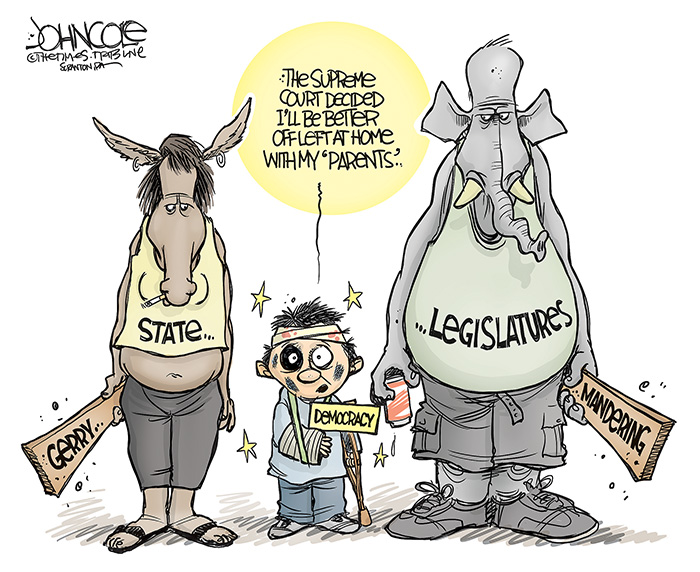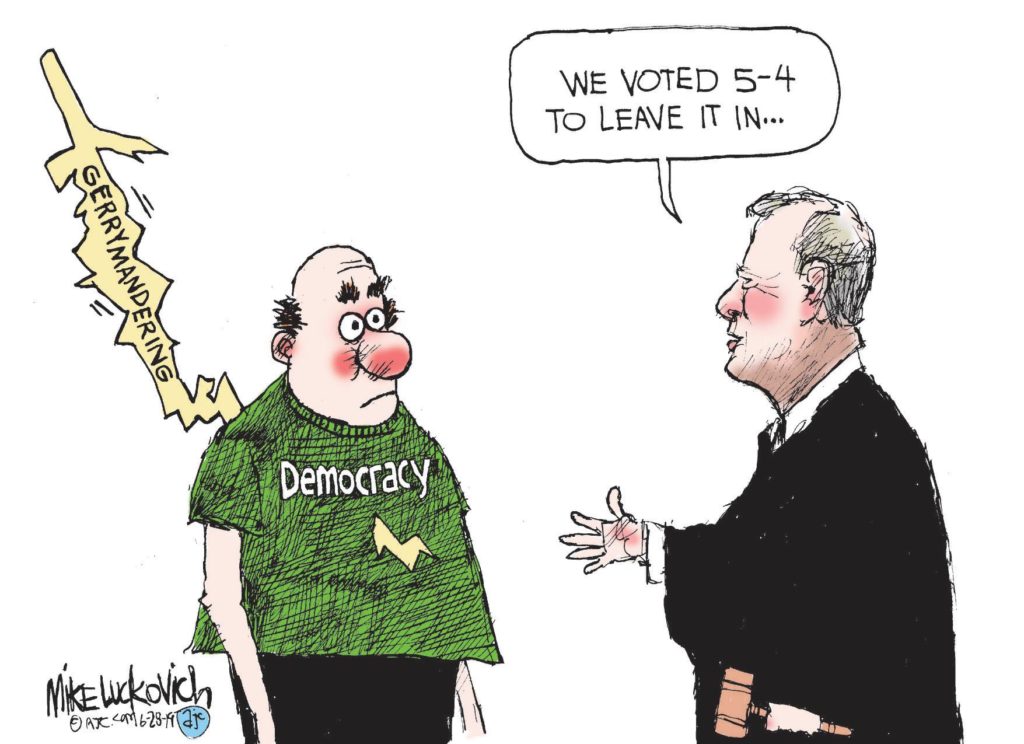The Daily Escape:

Wildflowers at St. Marys Lake, Glacier NP – July 2019 photo by zjpurdy
Wrongo arises from his sick bed to discuss Trump’s war on the four Democratic Congresswomen. Saying “America, love it or leave it”, or, “Go back where you came from” are almost as old as the country itself.
“Love it or leave it” was a popular bumper sticker during the late 1960s. It was aimed at the anti-Vietnam War protesters who claimed that America was wrong to be fighting in Vietnam. The slogan possessed an internal logic. If you really hate where you are, why don’t you go someplace else?
The reality is that wanting policy change isn’t the equivalent of hating your country. Nixon and his supporters said that the (largely) student protesters believed that America itself was evil. That justified the slogan for the right, and we saw it everywhere.
Fighting for policy change today is perfectly acceptable. It says nothing about your love of country. Despite Trump’s shouting, dissent in no way equals hate of country.
By using “Go back where you came from”, Trump is tapping into one of the old reliable political tools, the fear and vilification of immigrants and their descendants. He’s using deeply entrenched roots in American history: Why don’t you just go back where you came from?
Or, as Trump’s North Carolina crowd said, “Send her back”. Send her back doesn’t just apply to Rep. Ilhan Omar. It means your black neighbors, the Guatemalan family at church, and the Hmong kids your son plays soccer with. It means your Indian co-workers; it means the Chinese couple in the park.
But it doesn’t include any of the roughly 580,000 illegal migrants from Europe.
From the Alien and Sedition Acts in 1798 to “No Irish Need Apply” signs in the 1830s, to the Chinese Exclusion Act of 1882, America has loved to hate immigrants. They were not only seen as competing for jobs, but as threatening the social, cultural and political order. Even in the 1830s people thought that they were taking jobs that should belong to Americans, and that they clung to their native language and refused to assimilate.
Sound familiar?
And once we stopped allowing Chinese immigrants, some of the jobs denied to the Chinese were subsequently filled by Mexicans. They were also viewed as different, clannish and hard to assimilate.
It’s good to remember that the US government has rules against saying to its workers “go back where you came from”. Here’s a quote from the Equal Opportunity Commission’s regulations:
“Examples of potentially unlawful conduct include insults, taunting, or ethnic epithets, such as making fun of a person’s foreign accent or comments like, ‘Go back to where you came from,’ whether made by supervisors or by co-workers…”
Isn’t Trump a government supervisor? Sure, but these rules don’t apply in Republican administrations. Robert Kagan in the WaPo:
“Trump has given us a binary choice: Either stand with American principles, which in this case means standing in defense of the Squad, or equivocate, which means standing with Trump and white nationalism. It doesn’t matter how you feel about Reps. Alexandria Ocasio-Cortez (D-N.Y.) and Ilhan Omar (D-Minn.). The truth is, they have done nothing and said nothing about the United States or about an ally (in this case, Israel) that has not been done or said thousands of times.”
Now, he’s going up against the entire Democratic Party. They’re quoting him directly. And the pit bulls at Fox News are saying that calling him out is grossly unfair.
It’s time for Democrats to stop debating Trump about whether he’s a racist. They simply need to keep saying it. Every day. Until November 2020. Along the way, which ever Democrat is nominated should say they have no intention of debating the liar and racist Trump. He doesn’t deserve the dignity and respect that the debate forum implies.
Instead, the Democratic nominee should buy time on all networks including Fox, and on all social media outlets in 5, to not-longer-than 10 minute pieces. In each, they can point out what Trump said he would do, and what actually happened.
Think how it might work for domestic policy: Trump gutted Obamacare with no plan for helping the people who lost insurance. His tax cuts helped corporations and the 1%, while doing nearly nothing for the rest of us. His tax cuts also blew a hole in our budget. He’s weakened our education department, and our environmental regulations.
The candidate would then present the solutions. Clearly, without the need for any ninety second rebuttals by the liar and racist Trump. The GOP will say we’re not following the rules, but Trump never follows “rules” of presidential behavior, why should Democrats?
He’s already proven that he will say anything (and possibly do anything) to get elected.
Stop legitimizing him.













